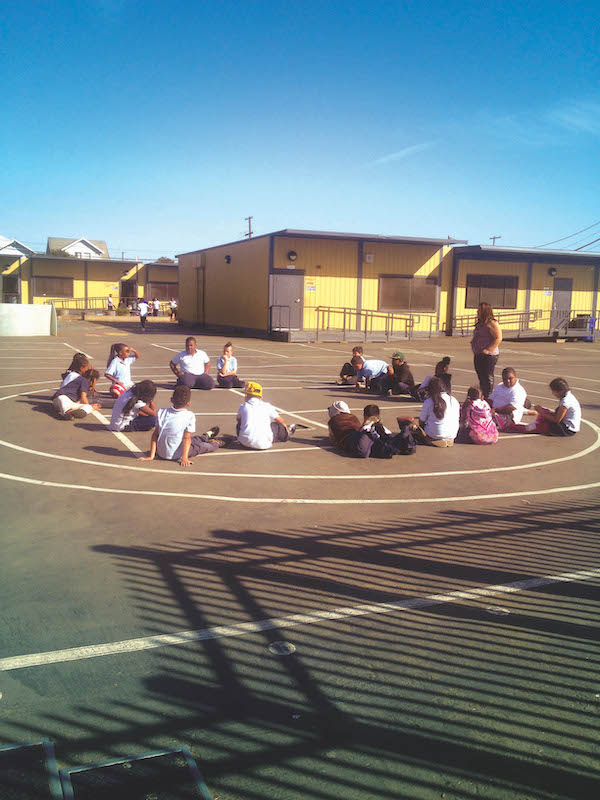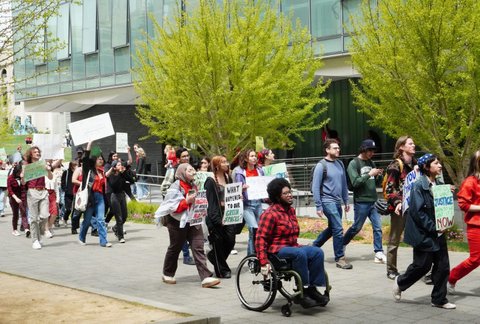
01 Mar Survey: CA Voters Prefer Counseling Over Armed Security at Schools
Report • Antoinette Evans
Following the unfortunate tragedy that recently occurred at Sandy Hook Elementary School, our nation is yet again faced with answering the question: How can we keep our schools safe?
A recent survey commissioned by The California Endowment and conducted from January 16-21, 2013 set out to measure voter support for a broad range of school safety policy options currently being reviewed by lawmakers from Sacramento to Washington. The findings show that California voters are more likely to support emergency preparedness and mental health services than they are to support arming teachers with guns or increasing police presence on school campuses.
According to the survey, 96 percent of voters support the training of school staff in emergency response, as well as requirements for schools to have a comprehensive safety plan. By comparison, only 50 percent support putting armed police officers in every school and even less (31 percent) support teachers being trained in firearms so they can carry guns on school grounds.
California voters who were polled also showed 91 percent support for training teachers in conflict resolution techniques, expanding mental health services in communities and schools and training school staff so they can recognize signs of mental illness.
After the survey was released, The CC Pulse sought the opinion of two Richmond community members who are also West Contra Costa Unified School District employees, to get their own thoughts on the issue of violence at school, and what to do about it:
“We must have a positive demeanor and have an open door policy to effectively communicate in a positive tone with our young men and women,” said Bill Swift, Human Relations Specialist at Kennedy High School in Richmond, when asked how he feels schools can better support the physical and emotional well-being of students. “We have to continue to be out there walking the campus, drop into classrooms, let our students see us as someone they can respect and bring their issues to,” he added.
Swift believes employees should participate in safety and self-defense training but added: “It is important to try to understand the situation first, before using any type of force as the last resort. Some students have that street mentality and are not afraid to harm a staff member; and staff members do not want to be hurt while performing their duties.”
Rhonda Haney, Coordinator of Disaster Preparedness and Safety for the West Contra Costa Unified School District (WCCUSD), also shares the belief that trainings can be helpful: “School site employees should participate in emergency preparedness training to enhance school safety.”
Haney expressed a similar belief in counseling and mental health services providing a vital role in violence prevention in our schools. “Mental health services can prevent larger emotional distress from developing later on. It’s important for students to have a safe place to go when they are in distress. When students feel safe and secure they are more comfortable in school and better able to learn and succeed.”
Swift included, “It is my belief that when the community and students are informed of services provided at their child’s individual schools, especially through letters, flyers, orientations prior to the academic school year and communicating with students, all [of that] contributes to a positive school environment. Every staff member plays an important role by being proactive.”
Organizations and institutions within the community, said Haney, also have a role.
“Community agencies can work with schools to identify and address safety issues and tie their services for students and their families. Culturally competent programs can impact not only the schools but also the surrounding environment in which students live,” said Haney. “For example, school districts can partner with local counseling centers to help provide services to families at risk of violence. Ideally suited partners would be: emergency management services, mental health service providers, youth centers and faith-based communities.”
Even everyday residents, regardless of whether or not they have a child attending one of our schools, can help too. “Everyone who lives in the area and is able should be involved in some type of committee or events at their local schools,” suggested Swift. “The more often our students see parents from their neighborhood at school — either volunteering or participating in ongoing activities — they behave better. It takes a village to raise a child and our school is a part of that village.” •






No Comments